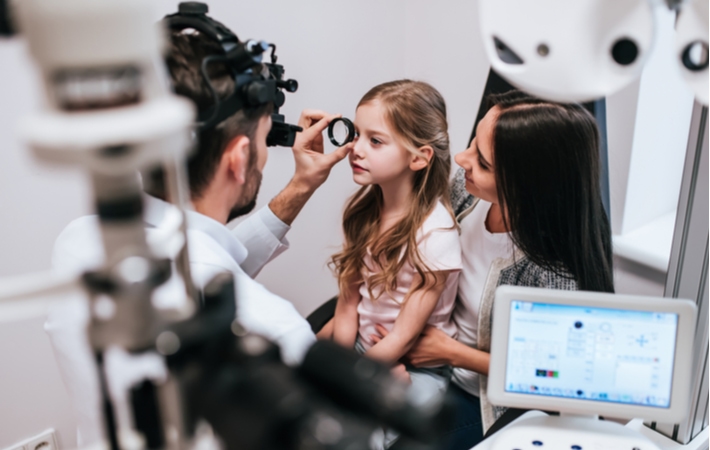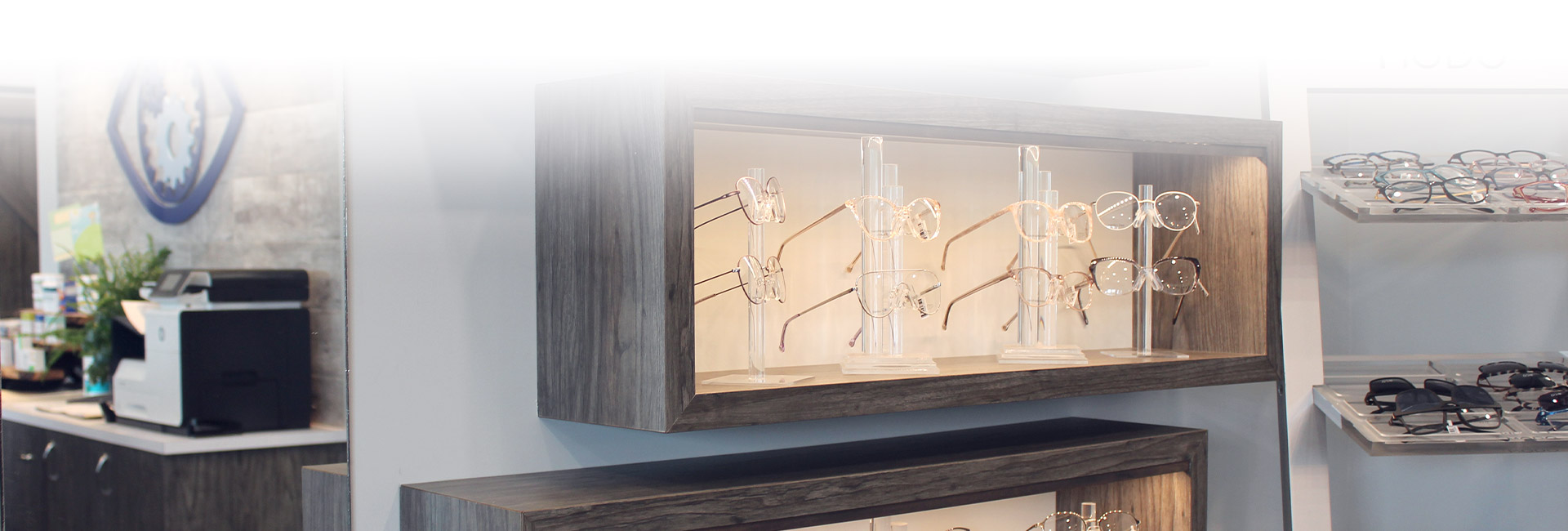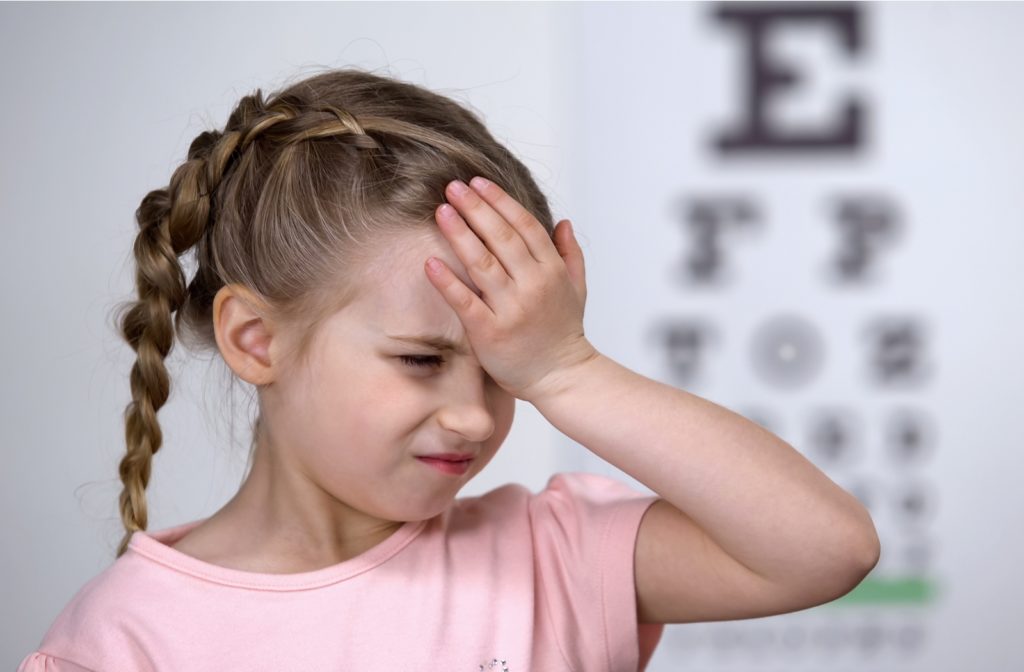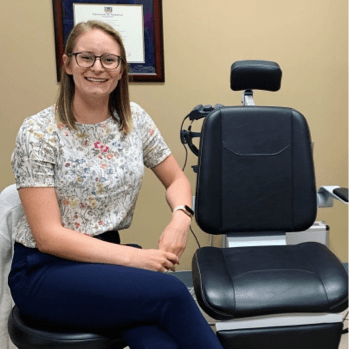Can Nearsightedness Improve with Age?
If your family has come in for their yearly eye exams, and you or your child has been diagnosed with myopia, you likely have questions about what you can do. You may have even heard that myopia in kids and teens tends to correct with age, and it can be dealt with later.
These myopia myths are misleading and can offer false hope. So does myopia improve with age? Though vision can stabilize as we age, myopia has no cure—even one as natural as age.
Despite that, you do have options! To protect your child’s vision, your optometrist may suggest techniques known as myopia control. Read on to learn about myopia, its trajectory through the lifetime, and where the idea that myopia improves with age may have come from.
What is Myopia?
Myopia is a refractive error that causes close-up objects to be seen clearly, while objects in the distance are out of focus. It’s more commonly known as nearsightedness and affects 30% of the Canadian population.
Myopia can be caused by an eyeball that is too long or a cornea that is too curved. Since our eyesight relies on light refracting through our cornea and hitting the right spot on the eye’s photosensitive retina, distortions in the cornea or eyeball can cause vision problems.
Myopia can be diagnosed during a routine eye exam. Symptoms of myopia include:
- Headaches
- Eyestrain
- Squinting
- Blurred or fuzzy distance vision
- Tiredness during activities that require distance vision, like driving, playing sports, or looking at something far away
Myopia Through the Lifespan – Does Myopia Improve?
People often develop myopia during childhood. Studies show that the earlier myopia develops, the worse it gets later in life. It’s been suggested that the growing rate of myopia in children may be linked to genetics and lifestyle factors such as:
- Time spent studying
- Time spent indoors vs outdoors
- Time spent doing near work
Myopia can be detected in your child’s eye exam and can be curbed with myopia control.
Myopia tends to stabilize in early adulthood. Myopia patients may discover that their vision has stabilized in their early 20s. Some people may confuse this with their myopia improving as they age. The reasoning behind the stabilization is more likely related to a halt to the eye’s growth.
You may be wondering, “Does myopia progress after 40?” Some people notice changes in their myopic vision once they pass 40, but it’s usually not for the better. Research shows that vision outcomes for older patients with myopia tend to be worse.
However, there have been documented cases of myopia decreasing by 40 or 50. Unfortunately, this typically has more to do with the development of cataracts or the onset of presbyopia than with myopia lessening. A worsening of hyperopia (or farsightedness) may be mistaken for a reduction in myopia, but it’s just an indicator of a different vision problem.
Don’t risk your vision in the hope that myopia can improve as you age. Go to your optometrist to explore your myopia correction options.

The Necessity of Controlling Myopia
Some people think it may be best to wait until vision stabilizes in early adulthood to manage myopia, but this strategy has risks. High myopia is more likely to develop when myopia is left unchecked.
High myopia can result in vision problems such as:
It’s best to do what you can to correct and curb myopia as soon as possible.
How Can Myopia be Corrected?
Though there is no known cure for myopia, there are ways to correct myopic vision. These differ between adults and children. Talk to your optometrist about the best option for you.
Myopia Control
Myopia control is a practice used to help curb myopia progression in children. Since their eyes are still growing, myopia’s progression can be slowed with interventions from your optometry team.
We recommend specialty contact lenses that can help reshape the cornea and leave myopia control patients with clearer vision. Our preferred lenses include:
Atropine drops can also slow myopia’s progression in children by dilating the pupil slightly and freezing the focusing mechanism in the eye.
Controlling myopia from a young age can help prevent the onset of high myopia. Though myopia can’t be cured, early intervention can lead to better vision outcomes.
Laser Eye Surgery
Laser eye surgery can correct myopic vision without the use of lenses or contacts.
Laser eye surgery is a vision correction option for people whose vision has stabilized. If your prescription changes frequently or you have not yet reached your early to mid-20s, you may not be a good candidate for this procedure.
Laser eye surgeries that can manage myopia include:
- Laser-assisted in situ keratomileusis (LASIK)
- Photorefractive Keratectomy (PRK)
- Sub-Bowman’s Keratomileusis (SBK)
Corrective Lenses
Many people with myopia achieve clearer sight by using prescription lenses. Especially in cases of mild or moderate myopia, glasses or contacts can help you achieve improved distance vision.
Don’t Wait For Myopia to Progress
Don’t risk your vision—or your child’s vision. Talk to an optometrist about myopia control for your kids and other myopia correction techniques for adults. Book an appointment to protect your vision.




